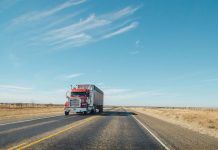Uber‘s Chief Product Officer Jeff Holden announced this Wednesday at the Web Summit conference in Lisbon, Portugal, that Los Angeles would be the next city where they plan to test and deploy flying cars to use as taxis. NASA will aid the firm in fast-tracking development and clearing regulation obstacles for a 2020 takeoff.
The announcement came just a day after one of its prospect rivals, Alphabet’s Waymo, announced the introduction of a fully self-driving ride-hailing program set to debut in Chandler, Phoenix over the next couple of months. There will be no driver behind the wheel in these new ride offerings.
Uber, who has been going through some organizational restructuring, seems like it has been slowly getting back on track. Flying cars are certainly a big goal to work toward, although it is certain that there are important developments unraveling under the radar while people continue hard at work to keep the firm running.
Want to experience what it will be like to push a button and get a flight with uberAIR? Keep watching. pic.twitter.com/rRnj68Vs9j
— Uber (@Uber) November 8, 2017
Uber sees on-demand aviation as a feasible thing
Ride-hailing relies on existing road infrastructure that is already struggling to adapt to the ever-increasing needs of drivers and commuters that need to use it every day. What Uber wants to bring to the table, though, is a new perspective from up above.
Uber Elevate is the name of the overarching program, and Uber Air will be the name of the on-demand aviation service that will start taking passengers on Dubai, Dallas, and Los Angeles at the beginning of this next decade.
Rather than using helicopters or drones, Uber proposes a cross between the two: VTOLs. Vertical takeoff and landing aircraft will soar through the skies using electric jet propulsion to fly horizontally at speeds over 300 km/h, making hourly commutes a matter of minutes.
EXCLUSIVE: Uber is pushing ahead with its plan for a network of flying cars through a partnership with NASA https://t.co/v2vy6AGrEj pic.twitter.com/UtTXj66S6w
— Bloomberg (@business) November 8, 2017
There are obstacles to clear before hailing a flying car
To realize this ambitious vision, Uber is partnering up with NASA to develop the technology necessary to get the vehicles up and running, while also pushing for faster regulatory approvals. Legal frameworks in this area are hazy, but lawmakers believe there is an impending boom of flying cars coming to the country.
One other aspect that Uber is overseeing is infrastructure renovation. Airspace needs no conditioning to get VTOLs flying, but the firm expects to repurpose thousands of building roofs and unused plots to develop landing pads with recharge stations. It is also working on air control software to keep track of traffic.
The ride-hailing giant it partnering with industry leaders too to create the aircraft per se, including Bell Helicopters, Mooney, Pipistrel Aircraft, and Embraer. Boeing’s Aurora Flight Sciences will be Uber’s strategic partner to develop flying taxi network management programs.
Source: Uber











